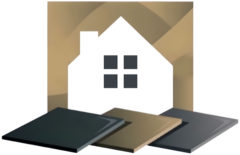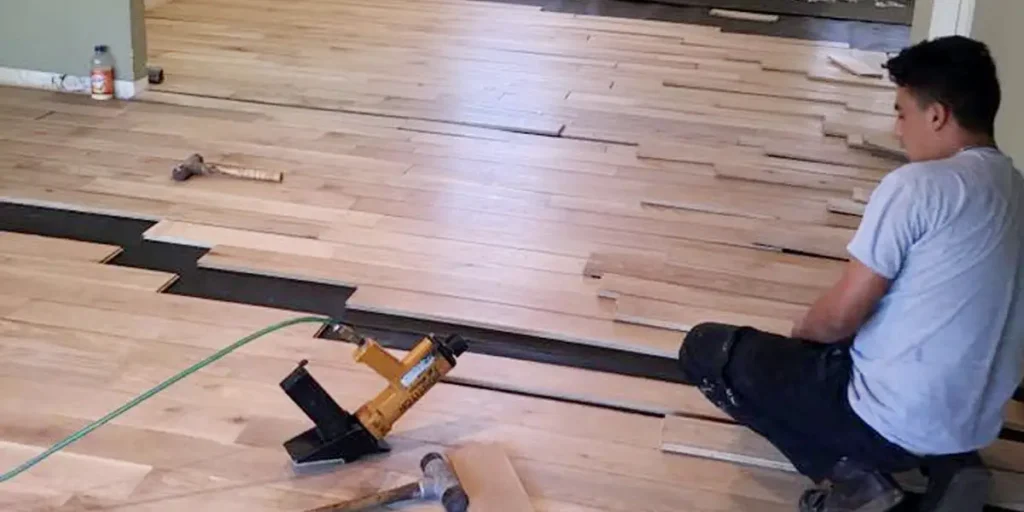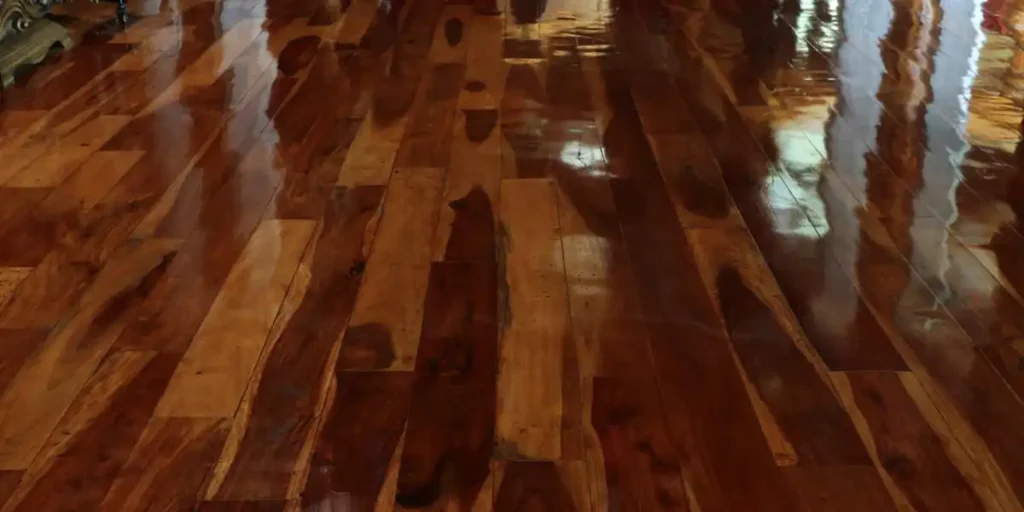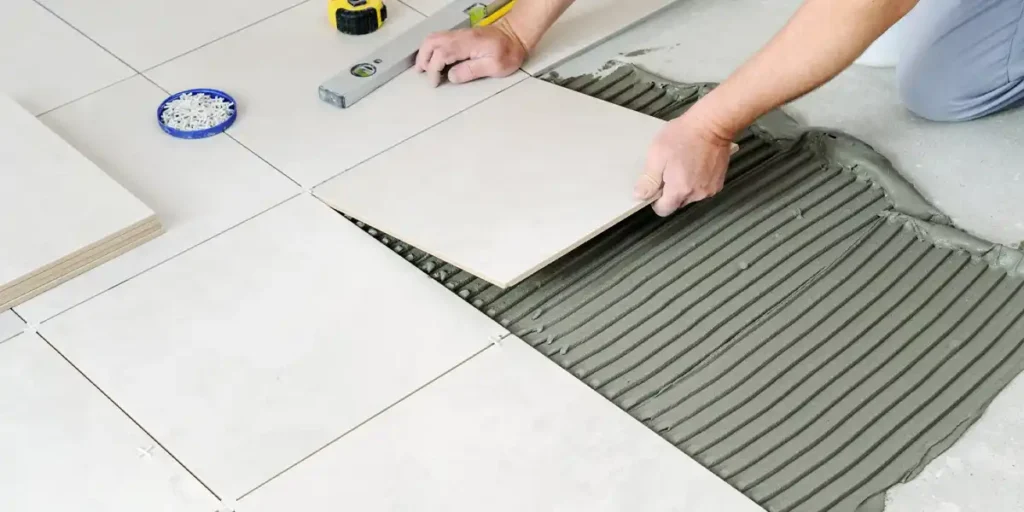Hardwood floors are more than just a surface to walk on. They’re a statement of style, durability, and value. Their rich tones and timeless appeal make them a favorite choice for homeowners.
However, one question often looms over this decision: How long does hardwood flooring really last? Whether you’re considering installing hardwood floors or already have them, understanding their lifespan and how to maximize it is key.
This guide will unravel the factors that influence durability, provide maintenance tips, and help you make the most of your hardwood investment.
Factors Affecting Hardwood Flooring Lifespan
The longevity of hardwood floors isn’t a fixed number; it’s influenced by a variety of factors that work together to determine their durability. By understanding these elements, you can take proactive measures to extend their life.
1. The Wood Species: Durability Starts Here
Not all hardwoods are created equal. Dense and durable species such as oak, maple, and hickory tend to last longer than softer woods like pine or fir. Oak is particularly popular for its scratch resistance and versatility, while maple offers a smooth, sleek appearance. If durability is your priority, choosing the right species is crucial.
- Hardwoods for High-Traffic Areas: Oak, hickory, and Brazilian cherry.
- Softwoods for Low-Traffic Areas: Pine or fir, where wear and tear are minimal.
2. Installation Quality: Setting the Foundation for Longevity
The quality of installation plays a pivotal role in the lifespan of your hardwood floors. Proper subfloor preparation, precise measurements, and the right techniques are essential.
Missteps during installation, such as uneven subfloors or poor alignment, can lead to squeaks, gaps, or premature wear. Professional installation might seem like an upfront expense, but it’s a worthwhile investment that prevents costly future repairs.
3. Maintenance and Care: Daily Habits Matter
Consistent maintenance is key to extending the life of your floors. Dust, dirt, and debris can act like sandpaper, scratching the finish and dulling the surface. Regular sweeping, mopping with appropriate cleaners, and refinishing as needed will help preserve their beauty and functionality.
4. Environmental Factors: Controlling Humidity and Light
Hardwood floors are susceptible to changes in humidity. Excess moisture can cause expansion and warping, while extremely dry conditions may lead to cracking.
Maintaining a stable indoor humidity level (between 35-55%) with the help of humidifiers or dehumidifiers can prevent damage. Additionally, using window coverings to block direct sunlight will help reduce fading.
How Long Does Hardwood Flooring Last?
The lifespan of hardwood flooring can vary significantly depending on the environment, usage, and maintenance. Here’s a breakdown based on usage scenarios:
- High-Traffic Areas (e.g., kitchens, entryways): Expect 15–25 years with proper care.
- Moderate-Traffic Areas (e.g., bedrooms, living rooms): Typically last 25–50 years or longer.
- Low-Traffic Areas (e.g., guest rooms, spare rooms): These can endure 50+ years, sometimes even reaching a century.
Engineered hardwood floors generally have a shorter lifespan, ranging from 20–40 years, depending on the thickness of the veneer and maintenance practices.
Extending the Lifespan: Practical Solutions
Even with the best care, hardwood floors can show signs of aging. Here’s how to address common issues and prolong their beauty:
1. Regular Refinishing: The Fountain of Youth for Floors
Refinishing involves sanding the surface to remove scratches and imperfections, followed by applying a fresh protective finish. Most solid hardwood floors can be refinished 5–7 times during their lifespan, depending on the thickness. Regular refinishing every 7–10 years can keep your floors looking brand new.
2. Protect Against Water Damage: The Silent Killer
Water is one of the biggest threats to hardwood floors. Clean spills immediately to prevent moisture from seeping into the wood. In areas prone to spills, such as kitchens, consider using water-resistant mats.
3. Repair Rather than Replace
For minor scratches and dents, repair kits containing fillers and stains can restore the wood’s appearance. For more extensive damage, replacing individual planks is a cost-effective way to maintain the overall integrity of your flooring.
4. Preventive Measures: Little Steps, Big Impact
- Use felt pads under furniture to prevent scratches.
- Avoid wearing high heels on hardwood floors to minimize dents.
- Place rugs or runners in high-traffic areas to reduce wear.
Final Thoughts
Hardwood flooring is an investment in beauty, functionality, and value. By understanding the factors that influence its lifespan and adopting proactive maintenance practices, you can ensure your floors stand the test of time.
Whether you’re installing new floors or caring for existing ones, a little attention goes a long way in preserving their timeless charm. With proper care, your hardwood floors can last a lifetime and then some!
Protect and Maintain Your Hardwood Floors with Ease! Contact us now to book a service with Cardenas Flooring and let our experts handle all your flooring needs, from waterproofing to regular cleaning
FAQs
How often should I refinish my hardwood floors?
The frequency of refinishing depends on the wear and tear your floors experience. Generally, hardwood floors should be refinished every 7–10 years for moderate use. High-traffic areas may require refinishing sooner, while low-traffic areas might go longer. Ensure enough wood remains for sanding if refinishing multiple times. Engineered hardwood can typically only be refinished once or twice due to the thinner top veneer.
What’s the best way to prevent scratches on hardwood floors?
Prevent scratches by using felt pads under furniture legs, placing rugs in high-traffic areas, and trimming pet nails regularly. Avoid dragging heavy objects across the floor and use soft-soled footwear indoors. Regular cleaning to remove dirt and debris is also essential, as these can cause abrasions over time.
How can I tell when my hardwood floors need refinishing?
Signs that your floors need refinishing include visible scratches, dullness, discoloration, or an uneven finish. If water doesn’t bead on the surface but instead soaks in, the protective layer is likely worn out. Consulting a professional for an assessment can help determine the best course of action.
Can hardwood flooring be installed in humid areas?
Yes, but special care is required. Choose a stable wood species like teak or engineered hardwood for better resistance to humidity changes. Acclimate the wood to your home before installation and maintain a consistent indoor humidity level (35–55%). Using a dehumidifier in damp conditions or a humidifier in dry climates can help prevent warping and cracking.
Are hardwood floors suitable for homes with pets?
Yes, but precautions are necessary. Opt for harder wood species like oak or hickory that resist scratches. Use rugs in areas where pets frequently move, and keep their nails trimmed. Clean up pet accidents immediately to prevent stains or moisture damage. A durable finish, such as polyurethane, can also add extra protection.




